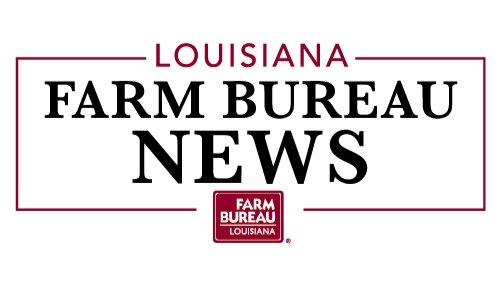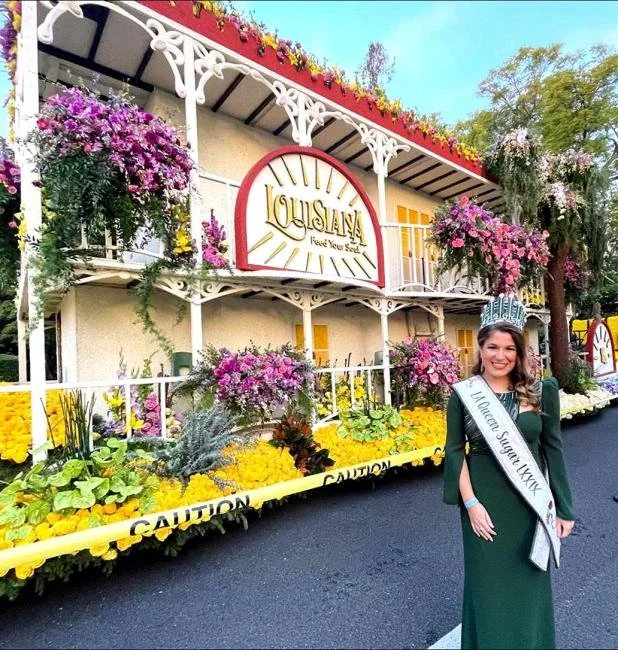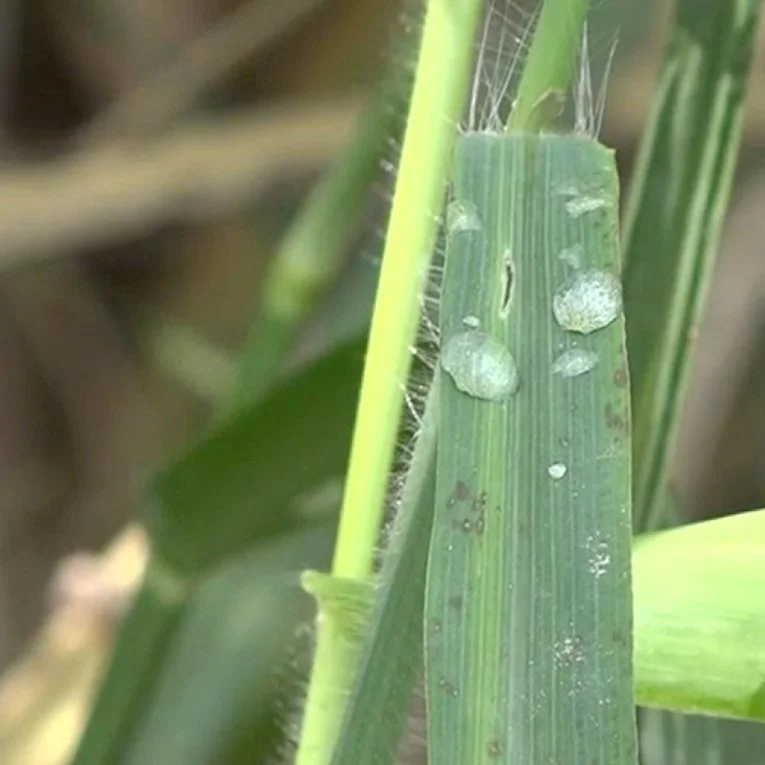Harry L. Laws & Company, the majority owner of the Catherine Sugar Company, is creating a non-endowed fund to further research at the LSU AgCenter Sugar Research Station in St. Gabriel.
Read MorePatrick Frischhertz, a farmer in Plaquemine, finished harvesting his sugar cane on Thursday and breathed a huge sigh of relief.
''I feel very blessed to be able to cut all the cane out of our fields,'' he said. ''It was looking really bleak.''
In late December, an arctic blast sent temperatures below freezing for three days across Louisiana. The freeze killed all of Frischhertz's sugar cane above ground and decimated the amount of recoverable sugar per ton. When temperatures rose again, the cane started to ferment.
''It was a real serious issue for all sugar cane farmers. We were sending cane that was almost sour to the mill,'' Frischhertz said.
The major number for a sugar cane farmer is ''recoverable sucrose,'' calculated by multiplying the recoverable sugar per ton by the tons of raw sugar per acre.
''The recoverable sugar per ton stayed about the same for four to five days, then the temperature started warming up and the sugar cane started to deteriorate. The amount of recoverable sugar per ton started to drop significantly,'' Frischhertz said.
Bobby Morris, a West Baton Rouge Parish farmer, said the area had about 240 pounds of recoverable sucrose per ton of sugar cane.
''Now we're doing 120-150 in sugar content. We lost 100 points in three weeks,'' he said.
Morris surveyed his fields and said he had about $200,000 to $300,000 worth of sugar cane left to harvest.
''It's not something you personally want to leave,'' he said. ''But it's hard to say whether we're going to lose any at this point.''
Sam Irwin, public relations director at the American Sugar Cane League, said out of the 11 sugar mills in Louisiana, five are continuing to grind, which is a good sign.
''As long as they're grinding, farmers are going to keep harvesting,'' he said.
A bigger concern was whether the freeze hurt the next crop - but early indicators seemed to alleviate those fears.
Sugar cane farmers typically begin harvesting in mid-September and finish in mid-January. It's always a race to beat the first freeze, and this season's crop was particularly large. By December, about 83% of the sugar cane crop statewide was harvested. Now, the harvest is about 96% complete.
On the bright side, sugar cane had been thriving before the freeze.
''We've already exceeded last year's sugar production, and last year was a state record,'' said Kenneth Gravois, a sugar cane specialist at the LSU AgCenter. ''So this takes us from an extremely good crop to slightly less than our expectation.''
Morris, despite his current worries, said sugar cane is generally doing well. ''It's very seldom we have a disaster. It's a tough crop to lose,'' he said.
The losses for individual farms are real, but Gravois said good yields in the majority of the harvest, plus a decent price for sugar and molasses, will hopefully bode well for growers.
''Sugar has better margins, better profit. It's more lucrative than other farming,'' Gravois said.
He noted that sugar cane is the No. 1 crop in Louisiana by value and an important economic driver for rural communities. This has attracted new farming operations into the industry, particularly in northern and western Louisiana. It's also attracting young people, whether in farming or in ancillary industries that support farming.
''There are a lot of good young people in this industry,'' Gravois said. ''It's been a real bright spot in the ag economy.''
Read MoreIn his 33 years of farming sugarcane, Ricky Gonsoulin had never had as good of a crop as the one he saw growing in his fields in 2022. And in 33 years, he had never lost so much as a stalk of sugarcane to a freeze.
But that unlikely scenario came to pass in late December when an arctic blast sent temperatures below freezing for three days across Louisiana.
Read MoreAvery Claire Hebert has ridden or attended many parades over the last 21 years. But on Monday, Hebert road in a unique parade.
Hebert, a 2019 Vermilion Catholic graduate, is the Louisiana Queen LXXIX of the Sugar Cane Festival in Iberia Parish.
I have had a few questions about the soil temperatures during the low temperature event we experienced on December 22, 2022. Note that the American Sugarcane League funded us some new temperature sensors and these were installed in an actual sugarcane field at Dean Lee. The data from these sensors is given below. The blue line is for the 2-inch depth. Note that soil temperatures stayed sufficiently warm that no damage should not have occurred. If you do think you had any damage, please let your ANR agent know.
Read MoreMonday marks the start of the first work week in the New Year — and for Acadiana's sugarcane farmers, it's a busy one.
Read MoreLSU Ag Center experts say the recent freezes were disruptive to the sugar cane industry. Sugar cane specialist Kenneth Gravois the crops now being harvested experienced what he calls a killing freeze.
“We’ve bred some cold tolerance into sugar cane but nothing that can withstand the 16, 17, you know mid-twenty-degree nights that we’ve had,” Gravois said.
Read MoreAvoyelles Parish is one of 11 parishes in Louisiana designated as disaster areas by the U.S. Department of Agriculture due to excessive rains in the second half of 2022.
The potential financial aid that farmers, especially local ones, can receive could be crucial for some families already anticipating a significant loss.
Read MoreFor the better part of a decade, people in the drinks industry predicted—at times with breathless enthusiasm—that fresh cane spirits were poised to become the next big thing.
Olivia Stewart, president of Oxbow Estate Rum, recently added an agricole-style rum to the operation’s lineup. She hopes to create an A.O.C.-style designation for Louisiana sugarcane and spirits. The goal is not just to release notable cane spirits, she says, but to support the Louisiana sugarcane industry overall.
Read MoreA severe freeze is forecasted beginning on December 23, 2022, and for a series of nights afterwards. At the time of the December 23rd freeze, the industry will be about 83% harvested. All sugarcane remaining in the industry will be damaged to some extent. Every freeze event is different and forecasting the extent that harvest can be completed is impossible. Deterioration following a freeze is temperature dependent – higher temperatures will increase deterioration and lower temperatures will reduce deterioration.
Read MoreAs sugar cane trucks line Lafourche Parish roads this month to gather the 2022 harvest, local farmers have something to celebrate – sugar cane crops this year may go down as being one of the best the state has ever seen.
According to industry trade group American Sugar Cane League, the state’s greatest harvest on record is considered to have been in 2016, when Louisiana sugar cane farmers produced about 251 pounds of sugar per gross ton of sugar cane.
Read MoreLouisiana cotton production and yields were both higher in November while sugarcane production and yield were both down.
Read MoreOne of the reasons the American Sugar Cane League has been so successful in improving the sugarcane industry is its ability to collaborate.
We’ve partnered with several groups over the last 100 years. Among them are the United States Department of Agriculture, Louisiana State University AgCenter and the American Sugar Alliance but we’ve especially enjoyed a close relationship with the Louisiana Farm Bureau Federation.
Read MoreTwo centuries of sweet, sweet history make up Louisiana’s sugarcane industry. The American Sugar Alliance shares more about the industry’s resilience and success.
Read MoreWhen Wenceslaus “June” Provost Jr. comes out to the sugarcane field in New Iberia, Louisiana, the first thing he does is open up a window. Not a house window, but a window through the sugarcane field, an opening that he creates using a tractor.
Read More














